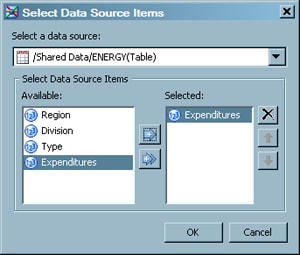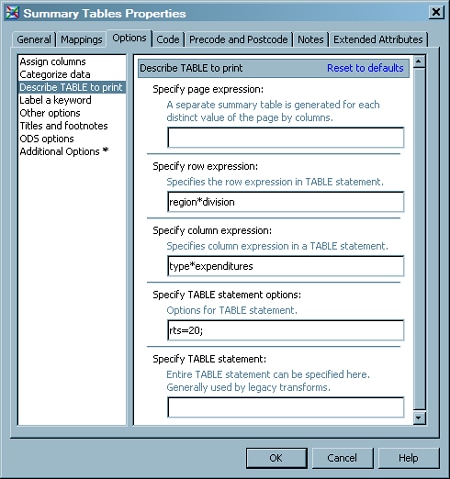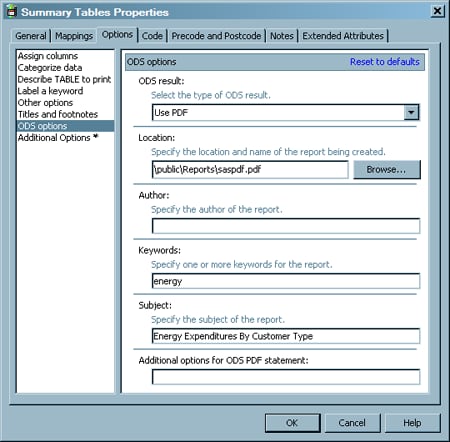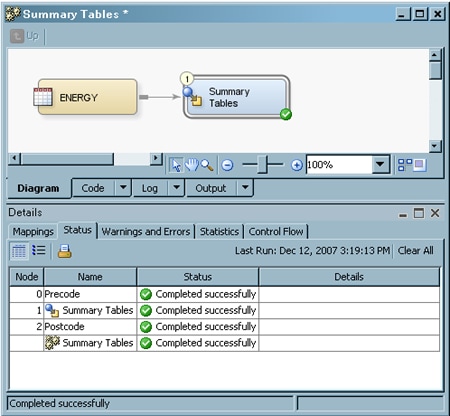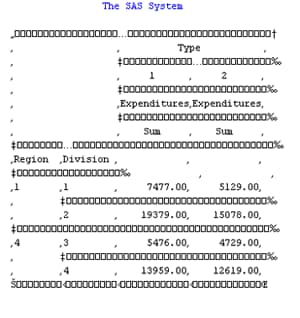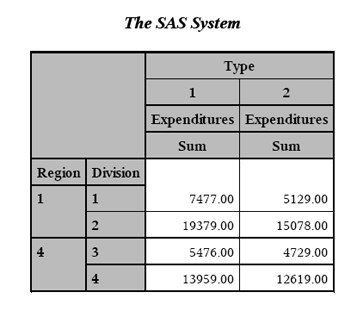Creating a Summary Tables Report from Table Data
Overview
You can use a Summary
Tables transformation as an interface to the TABULATE procedure. The
TABULATE procedure displays descriptive statistics in tabular format,
using some or all of the variables in a data set. You can create a
variety of tables ranging from simple to highly customized. It computes
many of the same statistics that are computed by other descriptive
statistical procedures such as MEANS, FREQ, and REPORT.
Solution
You can use the Summary
Tables transformation in a job that generates a tabulated data and
creates an ODS document that contains the results. This transformation
uses the TABULATE procedure to display descriptive statistics in tabular
format, using some or all of the variables in a data set. For example,
you can create a job similar to the sample job featured in this topic.
This sample job creates a table that contains summary information
about energy consumption. Note that the output for this job is sent
to the Output tab in the Job
Editor window and an ODS document that is configured
in the job. The sample job includes the following tasks:
Tasks
Configure Analytical Options
Use the Options tab in the properties window for the Summary
Tables transformation to configure the SAS tables that are generated
in the job and shape the output of your analysis. Note that the Options tab is divided into two parts, with a list of
categories on the left-hand side and the options for the selected
category on the right-hand side. Perform the following steps to set
the options that you need for your job:
-
Click Assign columns to access the Assign columns page. Use the column selection prompts to access the columns that you need in the SAS tables generated in your job. For example, you can click
 for the Select analysis columns (VAR
statement) to access the Select Data Source
Items window, as shown in the following display.
for the Select analysis columns (VAR
statement) to access the Select Data Source
Items window, as shown in the following display.
-
Set additional analytical options as needed. For example, the sample job has three CLASS statement columns, which are Region, Division, and Type. These columns are specified in the Select columns to subgroup data (CLASS statement) field on the Categorize data page. The TABLE statement options are set on the Describe TABLE to print page, as shown in the following display:
Configure Reporting Options
Use the remaining option
pages to create and save a report based on the analysis conducted
in the job. Perform the following steps to set the reporting options:
-
Click ODS options to access the ODS options page. You can choose between HTML, RTF, and PDF output and enter appropriate settings for each. The sample job uses PDF output. Therefore, a location, a set of keywords, the subject of the report, and code to enable ODS graphics are added to the fields that are displayed when Use PDF is selected in the ODS Result field. (The path specified in the Location field is relative to the SAS Application Server that executes the job.)
Copyright © SAS Institute Inc. All rights reserved.

